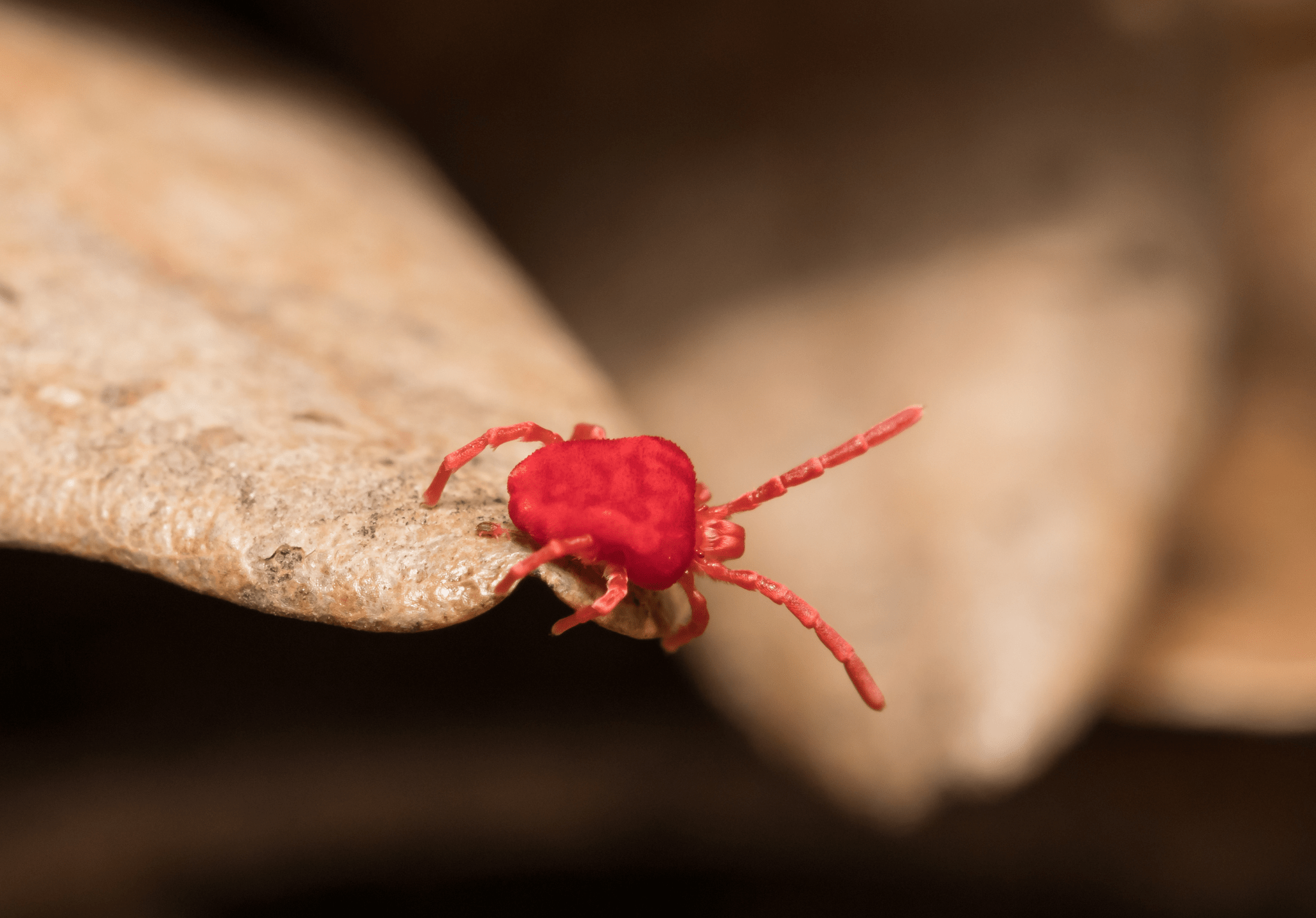Chiggers are almost impossible to see, but the itchy red bites they leave behind are hard to ignore. These tiny pests are a common nuisance during warmer months, especially if you spend a lot of time outdoors. Because they’re so small, most people don’t even realize they’ve encountered chiggers until the itching starts. Knowing how to identify and protect yourself against them is key. Here’s what you need to know:
What are chiggers?
Chiggers are the larval stage of a type of mite. They’re incredibly tiny creatures, usually so small that you can barely see them, and are bright red or orange in color. Adult chiggers usually measure between 1/20 and 1/60 of an inch. Despite their size, chiggers pack a punch when they bite. They don’t burrow into the skin like many people commonly think. Instead, they remain on the surface of the skin and latch on, injecting digestive enzymes to help them feed on skin cells. This causes itchy red bumps that may swell into welts and last for several days.
Are they dangerous?
While chiggers aren’t dangerous in the sense that they don’t carry diseases, their bites can be uncomfortable. The real issue comes from scratching, which can sometimes lead to the bites becoming irritated or infected. They tend to go for areas near skin folds or where your clothing fits tightly. Think places like ankles, armpits, behind the knees and near your waist. These are all areas where clothing often sits tightly, and warmth and moisture are produced.
Where do they live?
Chiggers prefer warm, humid environments with lots of overgrown vegetation. They’re commonly found in tall grass, dense weeds, piles of leaves and wooded areas. They thrive in these places and wait for a person to walk by so they can crawl on and begin feeding. Homeowners tend to find that chiggers are more of an issue during the warmer months, especially if their yards are unkept.
How do you know if you have an infestation?
The main way to know if you have a chigger problem in your yard is if you start seeing signs on your skin. Clusters of small, itchy red welts on areas of the skin where there’s warmth and moisture are a good indication of chigger bites. This is especially true if you notice these bites after spending time outdoors in your yard or garden. While you won’t be able to see chiggers easily, finding repeated bites in the same areas may mean you have a problem on your hands.
How do I prevent chiggers?
Preventing chiggers starts with making your outdoor areas less attractive. Keep your lawn well-maintained by trimming grass short, removing brush and overgrown vegetation, and clearing out piles of leaves or debris regularly to minimize potential hiding spots. If you know you’ll be spending time outside in wooded or grassy areas, apply DEET insect repellent spray to keep the chiggers away.
When is it time to call a professional pest control company?
While chiggers aren’t known to survive indoors, and therefore aren’t generally an issue inside people’s homes, they can become a problem in outdoor areas. If you notice chigger bites even after keeping your lawn well-maintained, it may be time to involve a licensed pest control expert. The technicians will assess your property, identify areas where chiggers may be present and apply targeted treatments to control them.
No matter the pest problem you’re facing, the Des Moines pest control experts at Pro-Staff are here to help! Call us at (515) 279-7378 or contact us online for a free quote.

